Things we all know about Lara:
Lara loves rocks.
Lara loves caves and other enclosed spaces.
Lara loves climbing things.
Lara loves pretty views.
These are four very basic Lara facts. These four facts also make Lara sound like she might be four years old, but that’s not the point. The point is that, while travelling southern Armenia, Lara finally found the place where she belongs. That place is, quite unfortunately, a deserted cave village, but we don’t need to dwell on the little, insignificant details like “deserted”. That just means there’s more room for me!
Where is this magical, mystical place? Khndzoresk, aka the future site of Larkzoresk. The village is only a 40-minute drive or so from Goris where I was staying for a few nights with my new friend Mary, and she connected me with a guide, Ara, who grew up in new Khndzoresk. I know, I’m getting ahead of myself again. Typical.

Khndzoreskis a village in the eastern part of Armenia, right on the border of what is now Artsakh. One name-origin theory is that “Khndzoresk” comes from the words “Khor Dzor”, meaning “deep gorge” in Armenian. At the beginning of the war with Azerbaijan, the village was so close to the fighting that some of the shepherds who lived there were kidnapped and killed. Anyway, the village has been occupied since ancient times, and until the end of the 1800s, Khndzoresk was the most populated village in eastern Armenia! At its height, there were around 24,000 people living there (though who knows how accurate that number is… that’s what I was told, but it seems like something that probably everyone has a different answer for). The thing that makes it so interesting is that it was a cave city… until the 1950s!
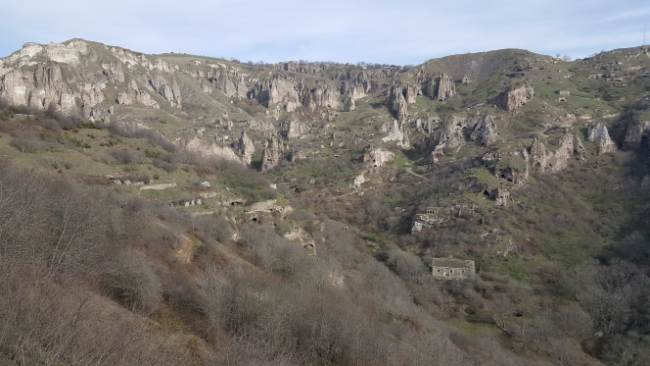
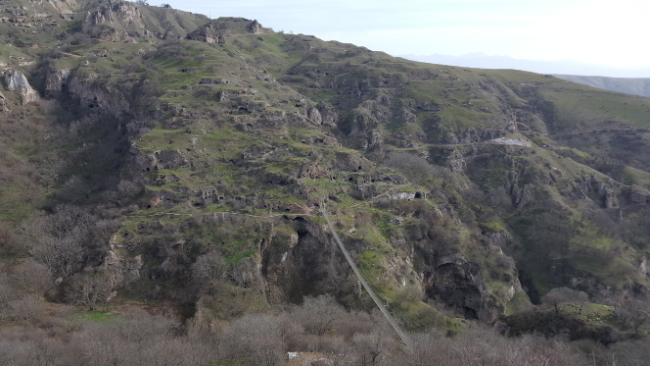

It’s made up of both natural and man-made caves situated in the cliffs along a gorge. Many of the houses had a cave in the back and then a structure built in front of it, and the roof of one house created the floor for the next. Ara explained that there were three different kinds of caves: houses, stables, and safe houses. The houses had the highest ceilings and often consisted of multiple rooms. They had holes in the ground for cooking and for storing grain. Chimneys were carved out to allow smoke to escape. If someone had a two-story structure as the front part of their house, it meant they were rich because it was expensive to build like that. The house structures were built out of stones, and they didn’t use concrete. Instead, some used just clay/mud, and others used a mix of clay, eggs, and water.
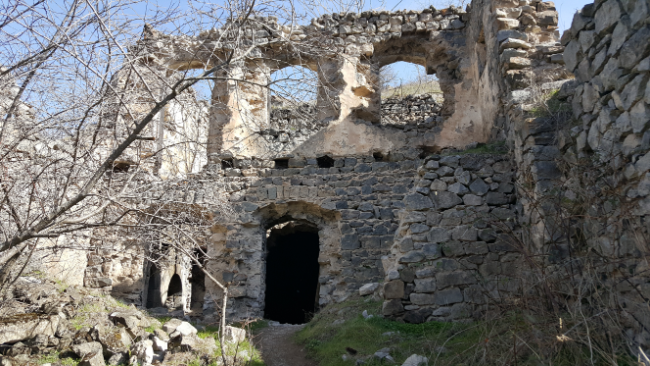
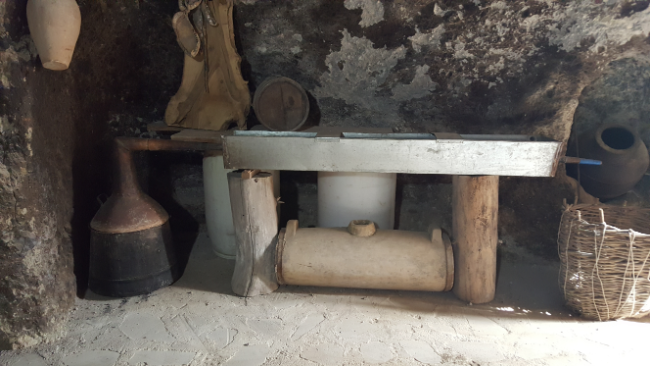
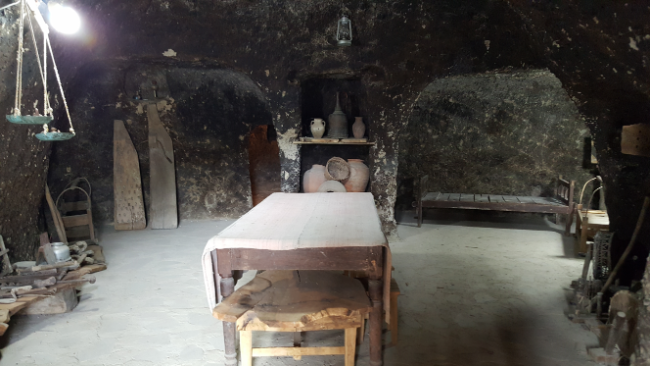
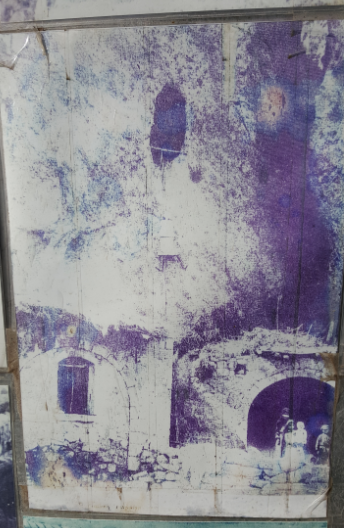
The stables had lower ceilings and didn’t have any additional construction in front. The safe caves were located high up in the cliffs. They could only be accessed by ropes which were supported by pieces of wood set across the cave entrances. In times of danger, the women and children would climb up and pull the ropes in to prevent invaders from reaching them. (Questions about this… did the women and children train for this?? It’s not like it’s easy to climb a rope into a cave! And I assume that a lot of the kids had to get carried up which means that the women must have been incredibly fit. Though I assume that everyone in the village was fit because you had to climb to get practically anywhere. Okay, I’ll stop. I just think the whole thing is kind of marvelous.)

There are four churches in town. The oldest is in a cave and dates back to 305AD! That’s impressive because Armenia adopted Christianity only four years earlier in 301AD. There were also schools, shops, businesses, springs for fresh water… it was a town, so there was everything a town needs. Ara’s father was born in old Khndzoresk, but in the 1950s, the Soviet leadership decided that the town should be moved to the flat land above. I asked why, and he said that it was closer to the existing infrastructure and people’s gardens (they were already on the flat ground). Most people moved out in the 1950s and 1960s, but the last family didn’t leave until 1974!
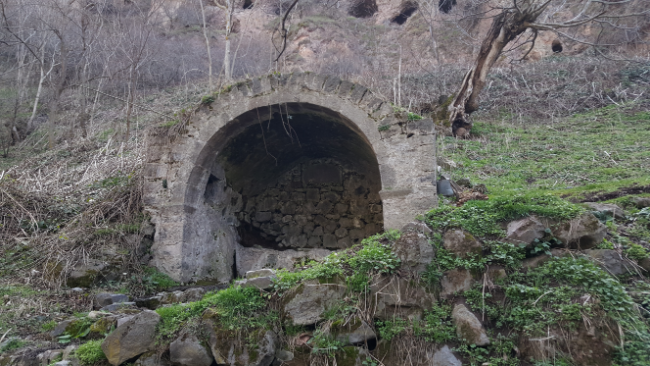
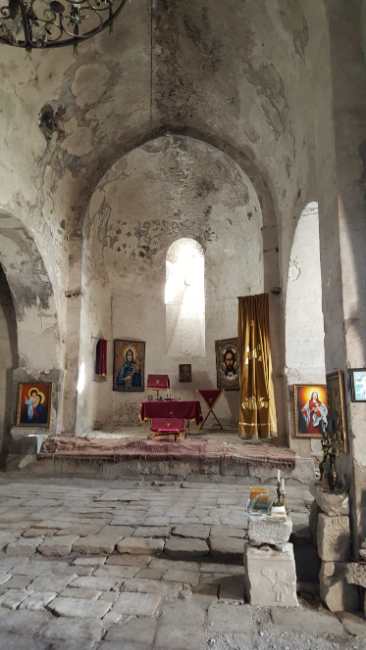
After the exodus, the cave town fell into disrepair. Ara said that he used to play in the caves with his friends growing up. He can still point out where his grandparents’ cave was, though it’s now overgrown by plants and inaccessible. The town also is kind of in ruins because when people moved, they took the stones from their cave houses to use in their new ones. Now, it’s a government protected area, so people can’t take materials or anything. They’re slowly cleaning up and restoring different parts of the town, such as one of the newer churches, Surp Hripsime, that was built in 1665. For a long time, it acted as a stable, so as you can imagine, it was filthy. Now, it’s been cleaned, and there are plans to fix parts of it. It was also cool because there are just random pictures and other documents inside the church. I asked Ara where all of the pictures came from, and he said that when the old town started attracting attention, villagers began bringing pictures and other things that they had laying around that they thought might be of interest.
There have been various improvements made to the old town over time. Ara explained that there’s a kind of unspoken rule that if you move out of the town and make a lot of money, you come back and build something. He said that some of those changes are good, but each one makes the town less authentic. I completely understand what he means… you want people to be able to access and see this awesome place, but you don’t want those changes to take away from its history and personality.
So far, the improvements have included a lookout point, stairs down into the gorge, paved paths leading to some of the sights, and a suspension bridge across the gorge. Supposedly there are plans to build a cable car down from the new town, but that seems like overkill to me. He told a story about the bridge, which looks somewhat terrifying, and said that it was built by hand by three guys: the one who was financing it, plus two others from the village. They didn’t have an engineer or anyone with bridge knowledge helping them, and when it was completed, someone complained to the government saying that it might not be safe. In response, the government sent out some engineers to evaluate the bridge, and they determined that it was strong enough to hold 500 people at once. As usual, who knows how true any of these stories are, but that’s all part of the fun.
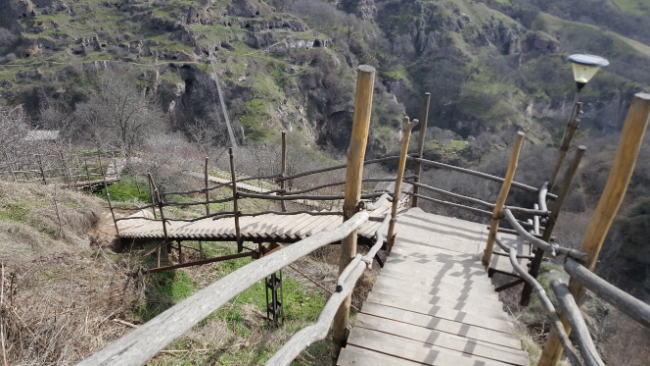
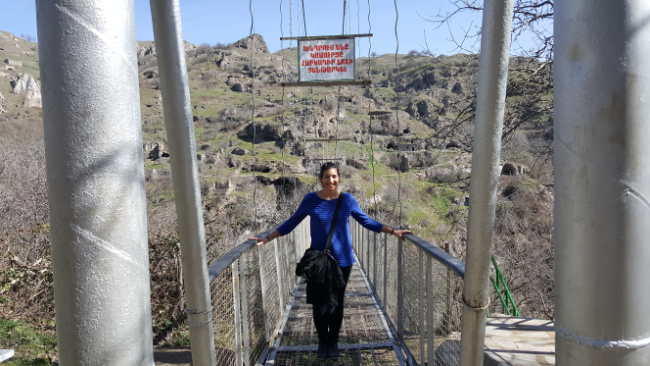
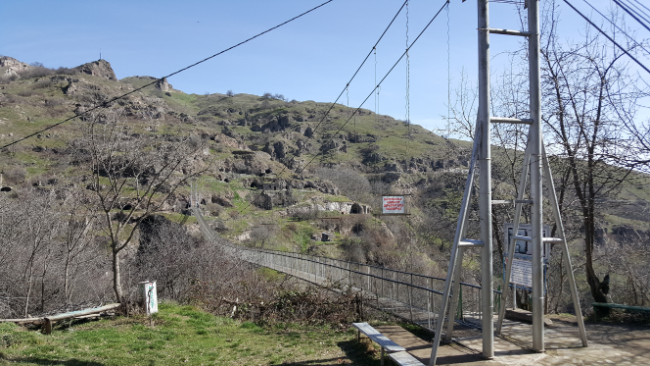
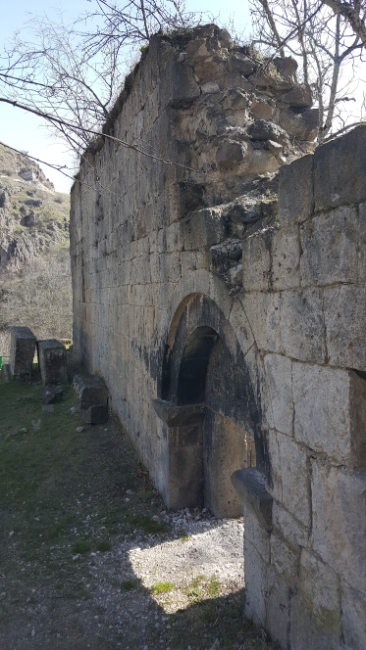
On the opposite side of the gorge from the main part of town, there’s a little area with ruins of a church and school and a cemetery. The cemetery contains the grave of an Armenian war hero, Mkhitar Sparapet, who fought with another hero, David Bek, leading the Armenian liberation efforts against Safavid Iran and the Ottoman Empire in the 18th century. Sparapet had a cave fortress at the top of the gorge. He was eventually murdered by some villagers who wanted him to move his fortifications away from the village because they were worried about what would happen if the enemies found him hiding there. They delivered his head to the Ottoman leader who apparently found their actions despicable and had them killed. Now, Iran still has his head (I have SO MANY questions about this… where have they kept it all these years? Why? In what conditions? I just don’t understand!), but they’ve agreed to give it back (ALSO so many questions about this… I asked what they’re going to do with it, but Ara didn’t know. What are they going to do with it? Bury it with the body? How will this handover occur? In person? By mail? Who will it be delivered to? Does anyone besides me think that this is the weirdest thing? Was that part of some big diplomatic discussion between Armenia and Iran? This whole thing is weird, right??).
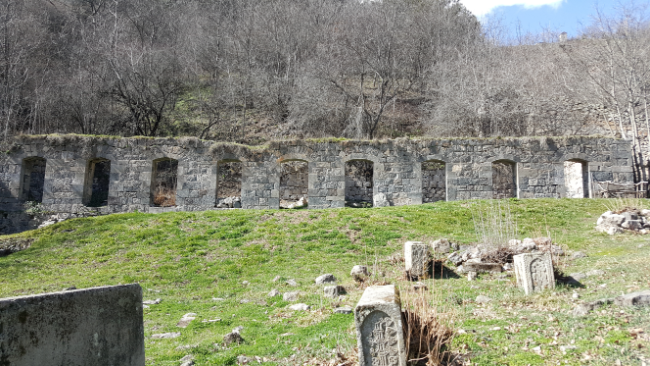

In the past, if you said the words “cave town” to me, I would have thought it sounded like the kind of thing I’d be interested in. Now that I’ve been to a cave town, that thought has been MORE than confirmed. If anyone out there is trying to start a cave town and needs resident volunteers, count me in!!! I already know exactly how I’d set up my cave.
